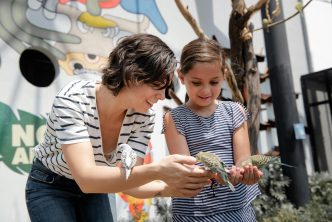Parrots are intelligent and social birds that can make wonderful pets for families, but they require special care and an understanding of their unique needs. Before bringing one home, it’s essential to consider whether a parrot is a good fit for your family’s lifestyle and level of commitment.
Understanding Parrot Behavior
Parrots are well known for their ability to mimic sounds, bond with humans, and live for decades. However, they are also highly sensitive and demand constant attention, which can pose challenges for families with young children. While some parrot species are more adaptable to family life, others may struggle with noisy or hectic environments.
Benefits of Having a Parrot in a Family Setting
Parrots can offer great educational value, helping children learn responsibility through daily care such as feeding, cage cleaning, and social interaction. As social animals, parrots often enjoy interacting with all family members—including kids—which makes them a vibrant part of the household. Their talent for mimicking sounds and learning tricks can also provide endless entertainment for both children and adults.
Challenges of Owning a Parrot with Children
Despite being vocal themselves, parrots can become stressed by sudden loud noises—common in homes with toddlers or small children. Young kids may also unintentionally be rough when handling the bird, which can cause distress or injury. Teaching children how to gently and respectfully interact with a parrot is crucial.
In addition, parrots require significant daily social interaction and mental stimulation. Families with busy schedules might find it difficult to provide the consistent attention these birds need. Their long lifespan—often several decades—also means owning a parrot is a long-term responsibility that shouldn’t be taken lightly.
Creating a Bird-Friendly Home Environment
A parrot’s cage should be spacious and placed in a quiet but socially active part of the home—close enough to feel included in family life but far from stressful stimuli like loud appliances or temperature fluctuations.
Maintaining a routine is essential. Feeding, cleaning, and social time should occur at consistent intervals to help parrots feel secure. Involving children in these tasks is a great way to teach accountability, but they must be trained to approach the bird calmly and gently.
Interactions between parrots and small children should always be supervised by adults. This not only helps prevent injuries but also ensures the bonding experience is positive and enriching for both the child and the bird.
Conclusion
A parrot can be a wonderful pet for a family with children—if the family is ready to meet its emotional and physical needs. With proper education, attention, and care, a parrot can become a beloved and entertaining companion, bringing joy to the entire household.
Photos: Pexels
















